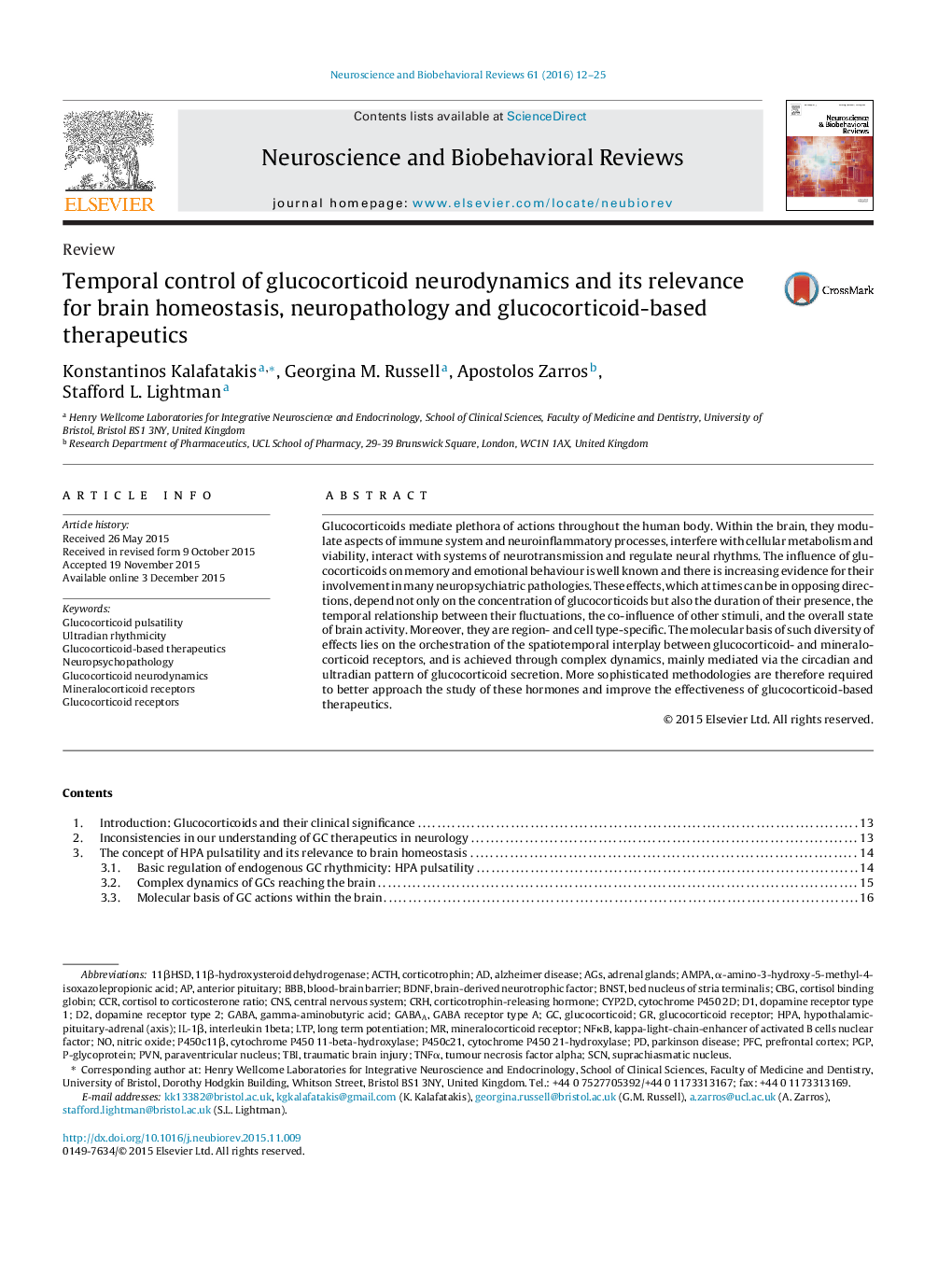| Article ID | Journal | Published Year | Pages | File Type |
|---|---|---|---|---|
| 937411 | Neuroscience & Biobehavioral Reviews | 2016 | 14 Pages |
•Glucocorticoids (GCs) have multi-level, sometimes conflicting effects in the brain.•GCs achieve complex neurodynamics, guided by their circadian and ultradian rhythmicity.•Ultradian rhythmicity leads to a spatial and temporal mosaic of GC-dependent actions in the brain.•The temporal relationship between GC pulses and other (physiological, pathological) stimuli lead to different effects.•GC rhythmicity needs to be taken into consideration for effective GC-based therapeutic strategies.
Glucocorticoids mediate plethora of actions throughout the human body. Within the brain, they modulate aspects of immune system and neuroinflammatory processes, interfere with cellular metabolism and viability, interact with systems of neurotransmission and regulate neural rhythms. The influence of glucocorticoids on memory and emotional behaviour is well known and there is increasing evidence for their involvement in many neuropsychiatric pathologies. These effects, which at times can be in opposing directions, depend not only on the concentration of glucocorticoids but also the duration of their presence, the temporal relationship between their fluctuations, the co-influence of other stimuli, and the overall state of brain activity. Moreover, they are region- and cell type-specific. The molecular basis of such diversity of effects lies on the orchestration of the spatiotemporal interplay between glucocorticoid- and mineralocorticoid receptors, and is achieved through complex dynamics, mainly mediated via the circadian and ultradian pattern of glucocorticoid secretion. More sophisticated methodologies are therefore required to better approach the study of these hormones and improve the effectiveness of glucocorticoid-based therapeutics.
Graphical abstractFigure optionsDownload full-size imageDownload as PowerPoint slide
